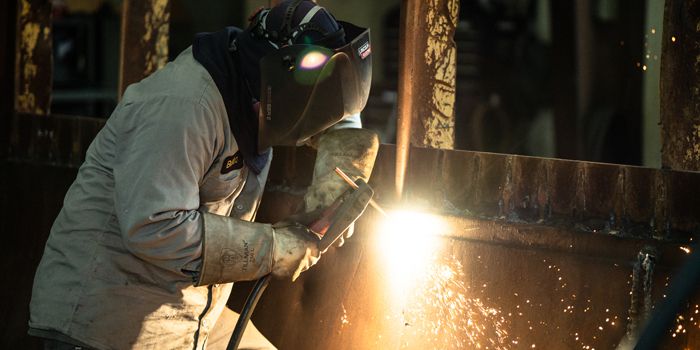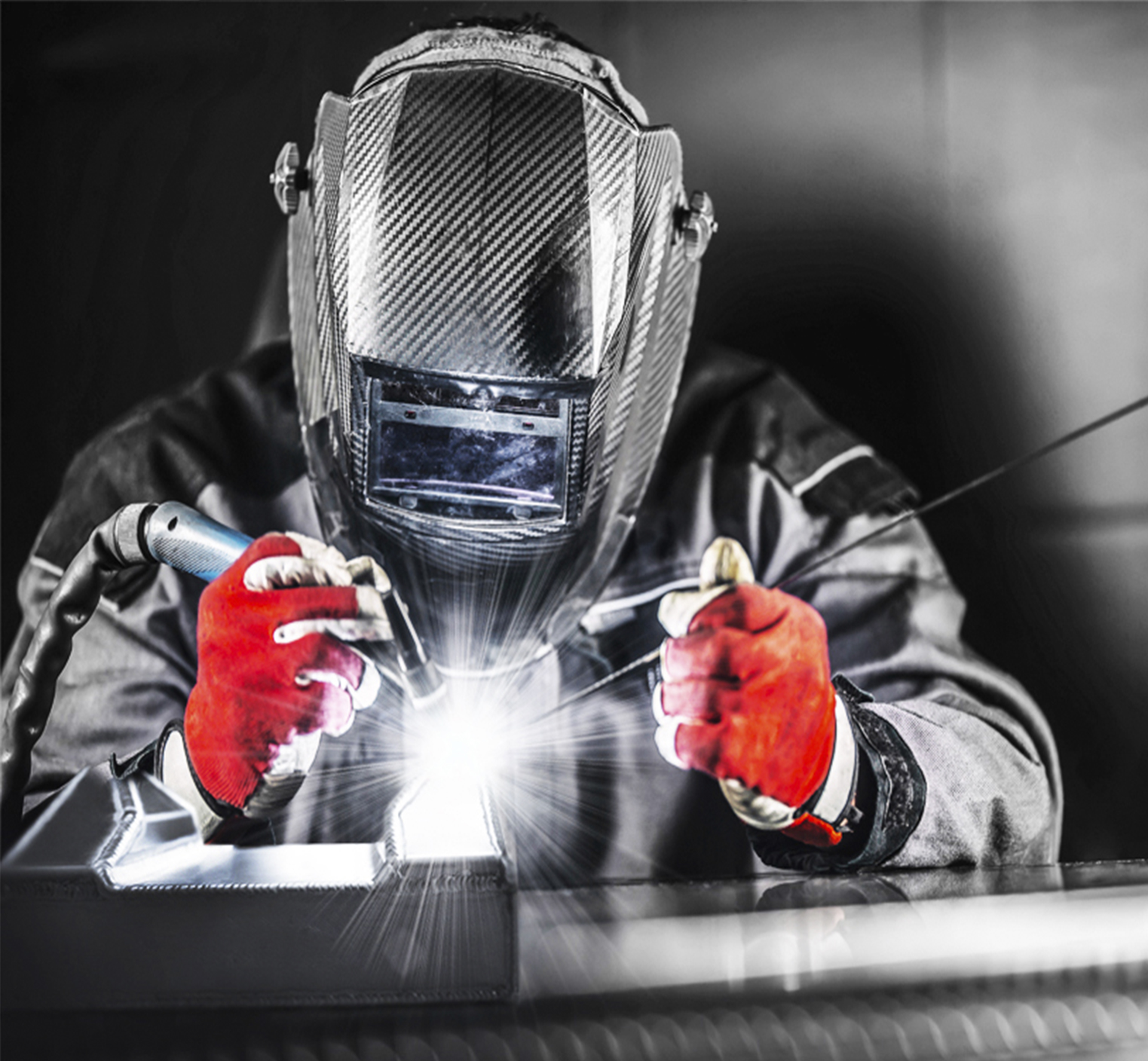Typical Welding Fixing Issues and Just How to Address Them Successfully
Welding fixings frequently encounter a variety of concerns that can endanger the integrity of the final item. Typical problems include poor penetration, porosity, and imbalance, amongst others. Each issue presents unique challenges that require particular techniques for resolution. Recognizing these problems is important for welders aiming to boost their skills and end results. This conversation will certainly check out these typical welding fixing concerns and effective approaches to resolve them.
Inadequate Infiltration
Inadequate infiltration occurs when the weld metal falls short to completely fuse with the base product, leading to weak joints and possible architectural failures. This problem usually comes from not enough heat input, wrong electrode angle, or incorrect welding speed. Welders may experience inadequate infiltration because of a mistake of the required specifications for a details material thickness or kind. Additionally, contamination on the base product's surface area can impede efficient bonding, intensifying the issue. To resolve insufficient penetration, welders need to guarantee suitable setups on their equipment and maintain a clean work surface area. Normal assessment of welds is advised to determine any type of shortages early, enabling timely corrections and the avoidance of endangered structural stability in bonded assemblies.
Porosity
Porosity is a typical issue in welded joints that materializes as tiny gas bubbles caught within the weld steel. This issue can endanger the integrity of the weld, causing lowered toughness and potential failure under anxiety. Belgrade Fabrication. Porosity commonly arises from contamination, dampness, or incorrect welding methods, which allow gases to run away into the liquified weld swimming pool. To attend to porosity, welders should guarantee proper surface prep work, maintain a clean workplace, and make use of suitable welding criteria. In addition, choosing the right filler product and shielding gas can alleviate gas entrapment. Regular assessment and testing of welds can aid recognize porosity early, ensuring timely corrective activities are taken, consequently preserving the top quality and reliability of the welded structure
Imbalance
Imbalance in welding can emerge from numerous aspects, including incorrect setup and thermal growth. Understanding the origin is essential for effective resolution. Several modification methods are readily available to straighten components and assure architectural honesty.
Sources of Imbalance
Welding misalignment typically originates from a range of underlying concerns that can endanger architectural honesty. One key cause is incorrect fit-up of components before welding, which can lead to spaces and uneven surface areas. Variations in thermal expansion throughout the welding process can likewise result in distortion, particularly if the materials being signed up with have various coefficients of expansion. Additionally, poor clamping and fixturing might fail to hold components firmly in position, bring about motion during welding. Badly conserved equipment, including welding equipments and tools, may introduce incongruities in the weld bead, additional contributing to misalignment. Driver error, stemming from insufficient training or experience, can also play a substantial role in developing misaligned welds.

Modification Methods Offered
Attending to imbalance properly needs a mix of restorative techniques customized to the certain issues handy. One usual method is using jigs or fixtures to hold components in the proper placement throughout welding, guaranteeing constant alignment. Furthermore, preheating the materials can help minimize distortion and enhance fit-up. For significant imbalance, mechanical adjustment methods, such as using hydraulic jacks or clamps, can be used to correct the placement prior to welding. Post-weld warmth treatment might also be necessary to relieve tensions brought on by misalignment. Lastly, cautious evaluation and change during the configuration phase can prevent imbalance issues from coming to be substantial problems, advertising a smoother welding process and enhancing general architectural honesty.
Distortion
Distortion is a typical obstacle in welding that can develop from different factors, including irregular heating & cooling. Recognizing the causes of distortion is essential for carrying out efficient prevention strategies. Resolving this issue not only improves structural integrity however also boosts the overall quality of the weld.
Root causes of Distortion
When subjected to the extreme warmth of welding, materials often undertake adjustments that can result in distortion. This sensation primarily occurs from thermal growth and tightening throughout the welding procedure. As the weld location warms up, the product broadens; upon cooling, it gets, which can develop internal anxieties. In addition, irregular home heating throughout a work surface can intensify these stress and anxieties, causing warping or bending. The kind continue reading this of material also plays a substantial duty; metals with varying thermal conductivity and coefficients of expansion may react differently, causing unpredictable distortions. Poor joint design and inadequate fixturing can contribute to imbalance throughout welding, boosting the likelihood of distortion. Recognizing these causes is important for reliable welding fixing and avoidance methods.
Prevention Techniques
Effective prevention techniques for distortion during welding concentrate on controlling warm input and making certain appropriate joint style. Preserving a regular warm input aids to minimize thermal growth and contraction, which can cause distortion. Using methods such as preheating the workpiece can also minimize the temperature level slope, advertising consistent heating. Additionally, choosing appropriate joint styles, such as T-joints or lap joints, can enhance security and lower stress concentrations. Applying appropriate fixturing to secure the work surfaces in position additionally aids in keeping placement throughout the welding process. Finally, staggered welding sequences can distribute warmth a lot more evenly, avoiding localized distortion. By using these methods, welders can considerably reduce the possibility of distortion and enhance the general quality of their welds.
Splitting
Cracking is a common concern come across in welding repairs, typically arising from different aspects such as inappropriate air conditioning prices, material choice, or insufficient joint prep work. The incident of splits can considerably compromise the integrity of the weld, bring about possible failures during procedure. To address this issue, welders need to initially assess the source, making certain that materials are compatible and properly chosen for the particular application. Furthermore, my latest blog post controlling the air conditioning rate throughout the welding process is essential; fast air conditioning can generate stress and lead to breaking. Proper joint design and preparation likewise add to minimizing the threat. Implementing these methods can boost weld high quality and sturdiness, eventually minimizing the possibility of cracking in ended up weldments.

Incomplete Blend
A considerable issue in welding repair services is incomplete blend, which occurs when the weld metal does not properly bond with the base product or previous weld passes - Welding. This issue can bring about weak points in the joint, potentially compromising the integrity of the bonded framework. Variables adding to insufficient fusion consist of not enough heat input, incorrect welding strategy, and contamination of the surface areas being joined. To resolve this concern effectively, welders need to ensure appropriate pre-weld cleansing and surface area preparation, in addition to adjust their welding criteria to achieve adequate infiltration and fusion. Normal examination throughout the welding procedure can additionally aid determine incomplete fusion early, enabling prompt rehabilitative actions to enhance the overall high quality of the weld
Overheating
While welding repair services can boost architectural honesty, overheating offers a substantial difficulty that can cause product destruction. Too much heat during welding can change the mechanical properties of metals, causing lowered stamina, boosted brittleness, and bending. This phenomenon is specifically important in high-stress applications where structural dependability is paramount. Determining overheating can involve visual inspections for discoloration or distortion, along with keeping an eye on temperature during the welding procedure. To alleviate the risks connected with getting too hot, welders ought to employ appropriate strategies, such as managing warmth input, changing travel speed, and utilizing appropriate filler products. Additionally, executing pre- and post-weld warmth therapies can assist bring back product properties and boost the general quality try this of the repair, guaranteeing long-term performance and safety.
Frequently Asked Inquiries
What Are the Common Signs of a Welding Problem?

Exactly How Can I Check My Welds for Top quality?
To evaluate welds for high quality, one can use visual inspections, ultrasonic testing, and radiographic methods. Each strategy guarantees structural integrity, determines problems, and confirms adherence to specified standards, ultimately enhancing the dependability of the bonded joints.
What Safety and security Precautions Should I Take While Welding?
When welding, one should prioritize safety by putting on suitable individual protective equipment, making certain appropriate air flow, safeguarding combustible products away, maintaining a tidy workspace, and understanding surroundings to avoid accidents and injuries.
Can I Repair a Weld Without Renovating the Entire Joint?
Repairing a weld without renovating the entire joint is feasible, depending upon the damages (Belgrade). Methods such as grinding, including filler product, or using a welding procedure can effectively deal with certain problems while protecting the surrounding structure
What Equipment Are Necessary for Reliable Welding Repairs?
Vital tools for efficient welding repairs consist of a welding device, wire brush, grinder, safety gear, clamps, and filler products. Each tool plays an important function in making sure high quality and safety and security throughout the repair procedure. Porosity commonly emerges from contamination, wetness, or incorrect welding techniques, which permit gases to escape into the molten weld swimming pool. Badly maintained equipment, including welding equipments and tools, might present disparities in the weld grain, further contributing to imbalance. When subjected to the intense heat of welding, materials often go through changes that can lead to distortion. Fracturing is an usual concern come across in welding repairs, frequently resulting from various variables such as incorrect air conditioning prices, material selection, or poor joint preparation. A significant issue in welding repair work is incomplete blend, which happens when the weld steel does not effectively bond with the base product or previous weld passes.